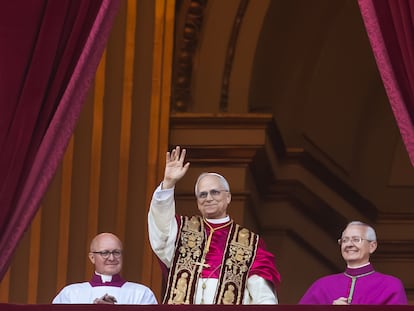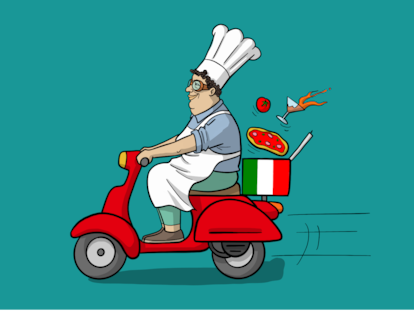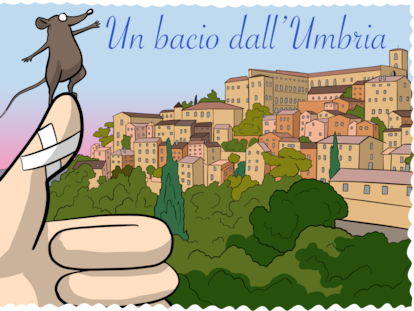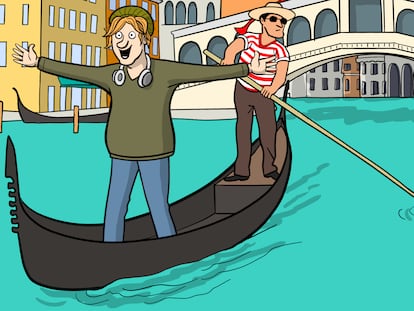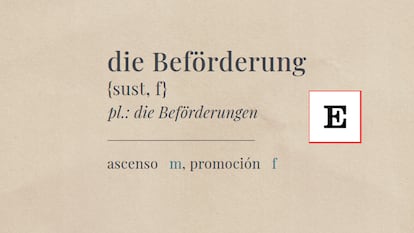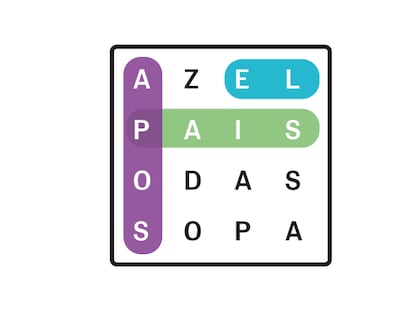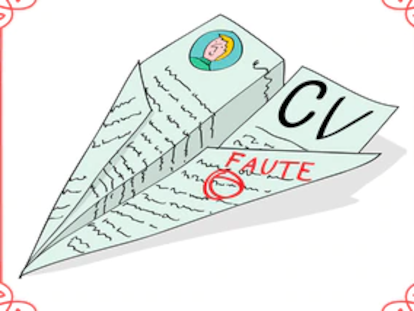The Augustinians: The order of the new pope in favor of a more universal Church
It is one of the oldest and most traditional communities of Catholicism, with eight centuries of history and Martin Luther among its brethren
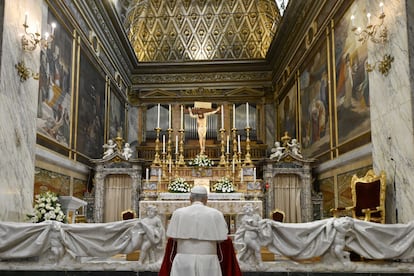
In his first speech, Pope Leo XIV introduced himself to the world as an Augustinian, “a son of St. Augustine, who said: ‘With you I am a Christian and for you, a bishop.’” He went on to say: “In this sense, we can all walk together towards that homeland that God has prepared for us,” highlighting the strong spirit of community that distinguishes this ancient religious order of the Church. It is an order that follows the teachings of St. Augustine, one of the most prestigious Christian philosophers, who lived in North Africa and Italy between the 4th and 5th centuries. Robert Francis Prevost, a friar and priest with more than two decades of experience as a missionary in Peru, is the first pontiff in history to come from the Augustinian order.
His first gestures as pontiff offer clear clues about his spirituality and suggest that the Augustinian character will define how he moves forward. In his first trip outside the Vatican as Pope on May 10, he visited the Augustinian shrine of the Mother of Good Counsel, in the town of Genazzano, near Rome. His coat of arms and pontifical motto are also Augustinian. The motto is taken from one of St. Augustine’s sermons: “In Illo uno unum” which means something like “In that One, let us be one,” to explain, in the words of St. Augustine, that “although we Christians are many, in the one Christ we are one.” It is a motto that deepens the spirit of equality espoused by the Augustinians. Pope Francis’ chosen motto was “Miserando atque eligendo,” which was related to mercy, one of the pillars of his pontificate.
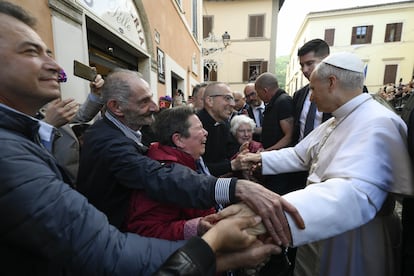
Communion and unity are key for the Augustinians, as Friar Antonio Giuseppe Masi, the provincial treasurer of the Augustinians of Italy, explains. And Pope Leo has already indicated during his first meetings with the cardinals that he will work to overcome divisions and achieve a united Church. “I think that the spirituality of St. Augustine, which is founded on union and communion, will be very present in his pontificate,” Masi says. And he explains that this Augustinian ideal is inspired “by the experience of the first Christian community in Jerusalem.”
In his first speech, Pope Leo XIV also mentioned that he wanted a synodal Church, a concept promoted by Pope Francis, which defines the Church as a community on a joint pilgrimage toward the kingdom of God. Synodality seeks to open the institution to all the baptized in order to make it more horizontal and universal — a proposal that is resisted by conservative Catholics.
Based on dialogue and listening, a synodal approach is also part of the Augustinian DNA. “The concepts of synodality and co-responsibility are embodied in our order. There are priors at the general, provincial and local levels, but the authority that marks the path to follow is the Chapter, that is, a group of brethren, not just the head. He makes decisions with the brethren. What to do, how to do it, and where to do it is something that is established in communion, it is not decided alone,” Masi explains.
The bursar of the Order in Italy reveals that the Augustinians “dedicate themselves to the study of the things of God in general and of society, with attention to the world in which we live.” He also says that most Augustinians around the world have had the opportunity to know Prevost personally in his long tenure as prior general of the order. “In my years as an Augustinian, I have shared fraternal moments with him several times,” Masi points out, stating that the new Pope had at all times ‘an attentive, affectionate and close attitude towards the friars,” for whom he always had a smile. He emphasizes Pope Leo’s “simplicity” and describes him as “a father, not an authority.”
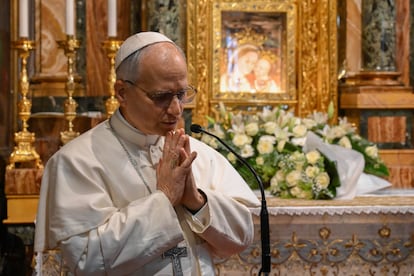
Prevost studied in Augustinian institutes and, during his many years as a missionary in Peru, he also worked as a teacher. He was also prior general of the Order of St. Augustine from 2001 to 2013, which led him to travel around the world visiting these communities.
Augustinian Symbolism
Leo’s papal coat of arms is loaded with Augustinian symbolism. While the upper part is dedicated to Marian devotion, the lower part features a closed book on which rests a heart pierced by an arrow — an image which symbolizes St. Augustine’s conversion experience.
Founded in 1243 when Pope Innocent IV invited several communities of hermits in the Lazio area to unite in a single congregation, the Order of St. Augustine currently has about 3,000 members across 50 countries. It is mainly engaged in missionary and evangelization, educational, and hospitaller activities. It is also a mendicant order, like the Dominicans and Franciscans, which means that its members have no stable income or property of their own, but live on donations and take vows of poverty, chastity, and obedience.
They always live in community and usually dedicate themselves to preaching the Gospel and working among the poor and marginalized. They follow what is known as the rule of St. Augustine, one of the oldest rules of Christianity in the West, which prescribed a more austere and solitary life than the Benedictine rule, which was more widespread in the High Middle Ages. The Augustinians were hermits, although nowadays their order is based on community life and the equality of all before the Gospel, which is reflected in their motto “One soul and one heart on the way to God (Anima una et cor unum in Deum.”) Members of this order cannot consider anything to be their own.
Among the illustrious members of the Augustinians is Martin Luther, who was an abbot and theologian before initiating the Protestant Reformation that split the Western Church in two in 1517. Another famous Augustinian was Abbot Gregor Mendel, considered the father of modern genetics.
The Augustinians experienced their greatest expansion in the 16th century, as Humanism flourished; at that time they opened numerous missions in America, Asia, and Africa. The foundation of the first community in Lima, Peru, where Leo XIV worked for a long time, dates back to 1551. From the second half of the 19th century, the order experienced a period of rebirth, with the support of Pope Leo XIII, whose name Prevost has chosen because of his defense of justice, dignity, and work.
Sign up for our weekly newsletter to get more English-language news coverage from EL PAÍS USA Edition
Tu suscripción se está usando en otro dispositivo
¿Quieres añadir otro usuario a tu suscripción?
Si continúas leyendo en este dispositivo, no se podrá leer en el otro.
FlechaTu suscripción se está usando en otro dispositivo y solo puedes acceder a EL PAÍS desde un dispositivo a la vez.
Si quieres compartir tu cuenta, cambia tu suscripción a la modalidad Premium, así podrás añadir otro usuario. Cada uno accederá con su propia cuenta de email, lo que os permitirá personalizar vuestra experiencia en EL PAÍS.
¿Tienes una suscripción de empresa? Accede aquí para contratar más cuentas.
En el caso de no saber quién está usando tu cuenta, te recomendamos cambiar tu contraseña aquí.
Si decides continuar compartiendo tu cuenta, este mensaje se mostrará en tu dispositivo y en el de la otra persona que está usando tu cuenta de forma indefinida, afectando a tu experiencia de lectura. Puedes consultar aquí los términos y condiciones de la suscripción digital.
More information
Archived In
Últimas noticias
Welcome to the post-religion era: The idea of Christianity as the absolute truth has become obsolete
‘I thought you would like it’: The risky sexual practice popularized by TV shows and TikTok
The digitalization of tourism: ‘They promise experiences and gave us the worst possible one’
Mexican peso defies uncertainty with forecasts of a new period of stability in 2026
Most viewed
- Sinaloa Cartel war is taking its toll on Los Chapitos
- Reinhard Genzel, Nobel laureate in physics: ‘One-minute videos will never give you the truth’
- Oona Chaplin: ‘I told James Cameron that I was living in a treehouse and starting a permaculture project with a friend’
- Why the price of coffee has skyrocketed: from Brazilian plantations to specialty coffee houses
- Silver prices are going crazy: This is what’s fueling the rally


